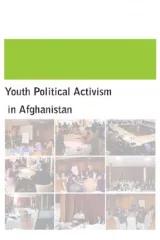Youth Political Activism in Afghanistan
Archived | Content is no longer being updated
Young people have traditionally been at the forefront of social and political movements in societies and, as witnessed during the recent Arab Spring, have also been instrumental in bringing about regime changes through revolutions. The government’s inability to fulfil the aspirations and provide for the urgent needs of young people, alongside an expanding youth population, has the potential to affect a country’s political landscape. A so-called youth bulge is often considered a negative phenomenon in developing countries, contributing to the increased likelihood of conflict due to a growing number of unemployed young men and the inability of the government to provide public services.[1]
Although the country is unlikely to face any revolution in the immediate future, with 68% of its total population under the age of 25, Afghanistan is currently witnessing a serious growth in its youth population, and it has resulted in socio-cultural and political consequences that have been previously unheard of in Afghan political culture and conventions.[2] One of these consequences has been the growth of moderate youth political activism in the Afghanistan, though it should be mentioned that youth and student politics are not an entirely new concept in the country.[3]
In fact, the radicalisation of the educated youth in the 1960-1970s, coupled with the unwillingness of the monarchical elite to share power with the new educated class, was one of the most important factors in the crisis of the Afghan state from 1973 onwards.[4] During the 1950s-1970s, young people often expressed their opinions through a particular ideological inclination, and the dominant trends were either to become an Islamist or a communist to challenge the monarchy. Youth activities focused on mobilizing large numbers of university students and recent graduates with the intention of overthrowing the political regime and establishing an Islamic state or a communist regime.[5]
But more than three decades of civil war followed by a democratic setup ensured that the current genre of youth political activism was more tangible and moderate than what has been seen in the past. This report sets out to explore the challenges faced by young political activists/groups in Afghanistan since 2001 as well as the gaps in the political system that are the key factors behind these challenges. Moreover, this paper presents policy recommendations that reflect interviews and meetings with political youth groups and desk review studies of youth political activism in Afghanistan.
[1]Anna Larson and Noah Coburn, ‘Youth Mobilization and Political Constraints in Afghanistan’, USIP Special Report, Jan 2014.
[2] Government of Islamic Republic of Afghanistan, Ministry of Information and Culture, “Afghanistan National Youth Policy – July 2013”.
[3] Anna Larson and Noah Coburn, ‘Youth Mobilization and Political Constraints in Afghanistan’, USIP Special Report, Jan 2014.
[4] Antonio Giustozzi, ‘Between Patronage and Rebellion: Student Politics in Afghanistan’, AREU, February 2010
Product details
Table of contents
Summary......................................................................1
Introduction:.................................................................1
Research Methodology:................................................2
Youth Political Activism in Today’s Afghanistan:..........2
Challenges to Youth Political Activism:........................5
Young People and Nation Building:..............................7
Conclusion:...................................................................8
Policy Recommendations:............................................8
Bibliography................................................................11
